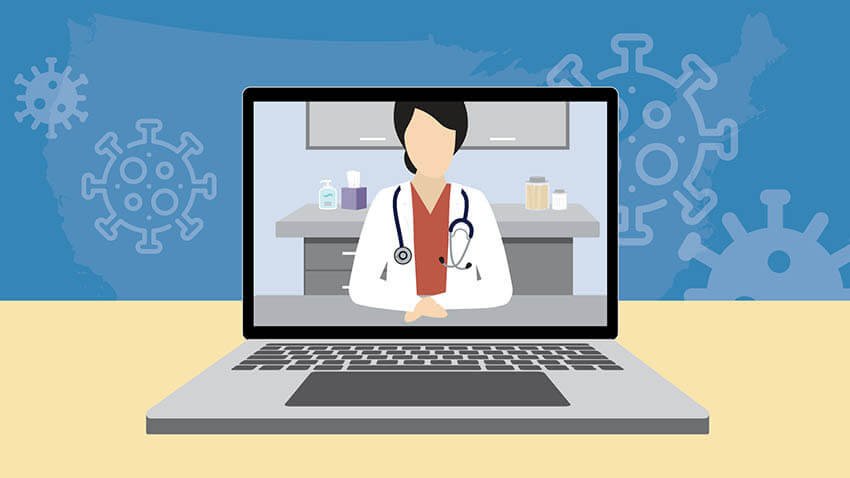The PHE (Public Health Emergency) came forward and generated the requirement for expanding all the telehealth regulatory needs which in turn resulted in an incessant growth in the area of telehealth services. Even though in the beginning telehealth was used for the expediency it provided, people understood the necessity of telehealth services for the continuity and the safety of healthcare.
Ever since the inception of the Public Health Emergency, telehealth has gained enough recognition when it cames to providing excellent healthcare outcomes, upgraded healthcare coordination and general health care access to all the people who are at-risk. Here you will get to know more about the requirements and the crucial elements required for telehealthcare billing services. In the age of technology, where everything is getting digitized the need for telehealth has increased exponentially over the past few years.
A Brief Understanding of Telehealth

CMS (Centers for Medicare and Medicaid Services) elucidates telehealth to be the use of telecommunications technologies and electronic information in order to expand the care when a medical provider is not present with the patient at a similar place and time. There are different HIPAA (Health Insurance Portability and Accountability Act) acquiescent technologies such as GoToMeeting, Zoom call for Healthcare which is used by many. But the HHS (United States Department of Health and Human Services) had issued a temporary notice in order to allow the other applications that are not public to deliver the necessary telehealth during the pandemic.
Asynchronous versus Synchronous Telehealth
When it comes to telehealth visits it can take place asynchronously or synchronously. Asynchronous telehealth refers to “store-and-forward”, wherein the provider and patient communicate based on their timeline. For instance, a provider is asynchronous in communicating with their patient when they get an email or a picture from them about a blister they have.
For the synchronous encounter to take place between the patient and the provider they must interact in a face-to-face manner during real-time with the aid of an audiovisual medium.
Different Kinds of Telehealth Services
During April 2021, it has been seen that Centers for Medicare and Medicaid Services has allowed for the payment of over 270 services provided. The example for some services that are allowed by the CMS is given below.
- Established Patient Home Visits (CPT® codes 99348 and 99347).
- Group Psychotherapy (CPT® codes 90853).
- Occupational and Physical Therapy, Therapy Services (CPT® codes 97110, 97535, 97116, 97112, 97750, 97760, 97755, 97761, 97161-97168, 92507, 92521-92524) and;
- Emergency Visits to the Department (CPT® codes 99281, 99282, 99283, 99284, 99285).
Documentation Healthcare for Telehealth

To make sure that the medical records tend to support the services of telehealth, there are certain documentation requirements that must be fulfilled. This is an important aspect of medication management as well.
- Look into the method used during telehealth – for instance, a secured phone call, a two-way video call and much more.
- Listing out all of the clinical participators along with all the actions and roles they are going to play.
- Providing the location of the clinic, home and other specific places if required.
- The time that is spent on the medical discussion must however be documented explicitly in order to support the necessary billed codes procedure which includes the stop and start times if and when required for service.
- The consent of the patient is important as well. The medical providers must report confirmation whether or not a member agrees to receive all of the needed services through telehealth. Their verbal consent to receive the telehealth services is important and it must be documented.
The Growth of Telehealth Services in The Recent Years
Even though telemedicine or telehealth has existed for many years, patients tend to go for visits that occur in person. The HHS revealed (U.S Department of Health and Human Services) that during February 2020, the telehealth visits only accounted for around 0.1% of the Medicare care appointments but within April the number had increased exponentially to 43.5%.
It was after the latest public health emergency that made telehealth a safer way in order to treat patients without being exposed to the novel coronavirus. However, this has led some medical providers to scramble and figure out ways on documenting the telemedicine visits.
The Innate Documentation Requirements Has Been More During the Pandemic
Telehealth is governed with the aid of strict rules and regulations. But there are a lot of concerns regarding the pandemic spreading throughout the clinics and hospitals, which has led the healthcare providers to set up the services of telehealth in a swift manner. In order to help the healthcare organizations that have the option of telemedicine, the CMS has loosened the regulations for telehealth during the pandemic.
Even though the need to provide excellent patient care is of utmost importance in order to document the telehealth visits, telehealthcare billing services is also an important reason in order to document all of the virtual appointments. Insurance companies require a record of all the healthcare services that have been provided in order to reimburse the necessary amount to the medical organization. This automatically means you would have to document all of the crucial details of the telehealth visits ensuring that you get all of the compensation from the insurance payers.
Even when the requirement for documentation is not legally needed, there are myriad other reasons why you should always focus on documenting the telemedicine visits. Moreover, the documenting of the virtual visits can help in the improvement of the effectiveness of a medical provider.
When there is the right kind of documentation it helps in the improvement of the overall telehealthcare. As crucial as it is to take notes during the virtual visits that occur between the patient and the doctor, some information may vary from time to time. Relying on the information given by the patient from the previous visit about their illness can change. Adapting the medical documentation that caters to the needs of the unique requirements of telemedicine is crucial, and that’s why choosing an outsourcing medical billing company like the Synergy HCLS becomes so crucial here.






